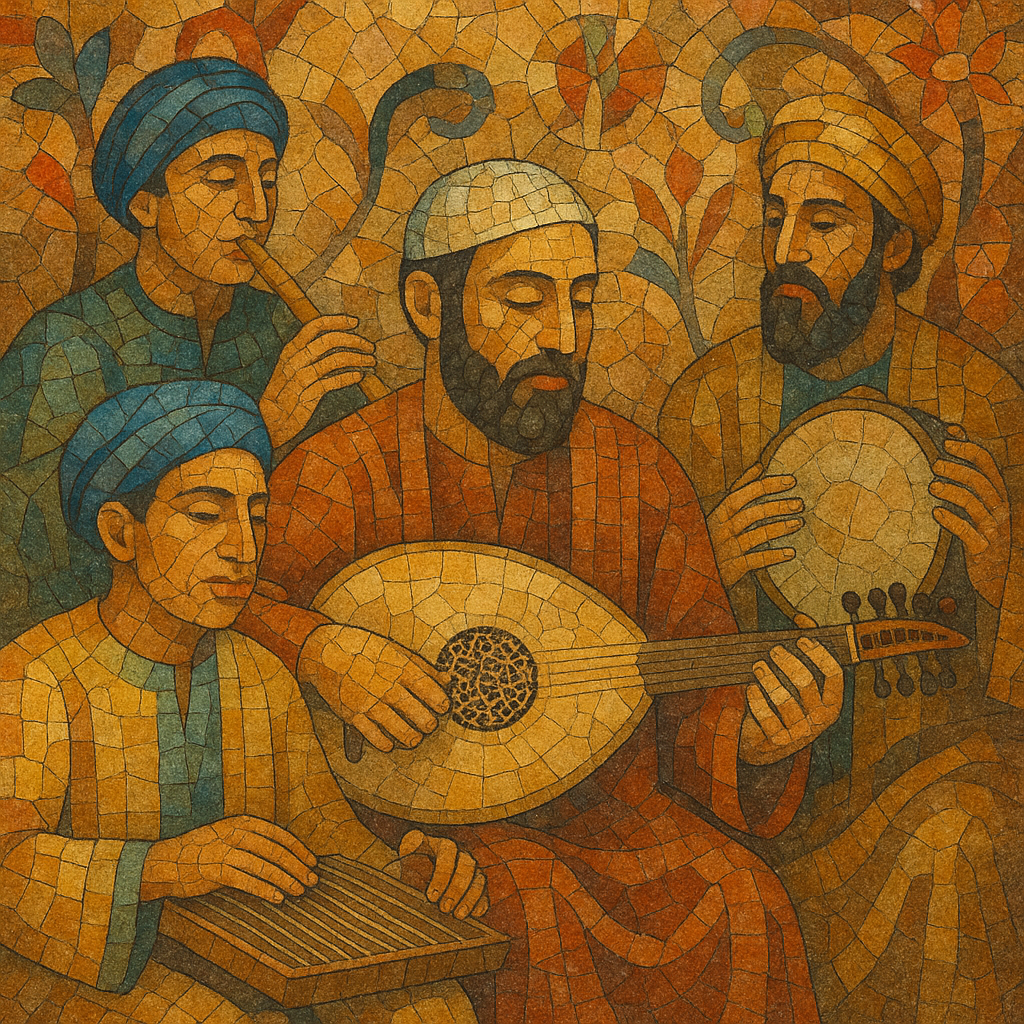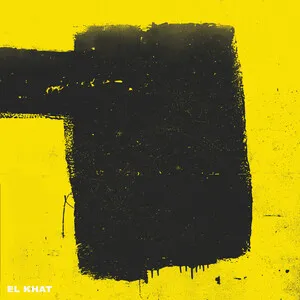Oriental Jewish music refers to the liturgical, paraliturgical, and secular musical traditions of Jewish communities from the Middle East and North Africa, as they were preserved in diaspora and recontextualized in Israel after the mid-20th century.
It blends Hebrew and Judeo-Arabic (and occasionally Ladino) texts with maqām-based melody, microtonal inflection, and cyclical iqa'at (Arabic/Turkish rhythms). Typical textures are heterophonic—voices and instruments ornamenting the same line rather than using dense harmony. Core instruments include oud, qanun, violin, ney, and frame/hand drums such as darbuka and riq; in modern settings, keyboards with quarter-tone capability and guitars may appear.
The repertoire ranges from synagogue piyyutim and Andalusian nuba-derived suites to wedding songs and urban genres like the Iraqi maqām. In Israel, these practices converged across Moroccan, Iraqi, Yemenite, Egyptian, Syrian, and Persian Jewish communities, shaping the sonic DNA that later fed Mizrahi/"Oriental" Israeli popular music.
Oriental Jewish music draws on centuries of Jewish life across the Middle East and North Africa. Jewish communities in Iraq, Morocco, Yemen, Egypt, Syria, and beyond cultivated synagogue chant and piyyut traditions alongside urban art musics such as the Iraqi maqām and Maghrebi-Andalusian nuba. Repertoires were transmitted orally, codified by paytanim (poet-composers), and performed at life‑cycle events and holidays.
Early 20th‑century commercial recording in Baghdad, Cairo, and Casablanca captured Jewish performers within broader Arabic and Ottoman musical spheres. Artists like the al‑Kuwaity brothers in Iraq and Zohra Al Fassia in Morocco achieved regional prominence, documenting modal practice, ornamentation, and poetic forms for a new mass audience.
Following mid‑century migrations, diverse Mizrahi and Sephardi communities converged in Israel. From the 1950s, synagogue choirs, neighborhood celebrations, and immigrant clubs sustained traditions while radio and state institutions favored European styles. Cassette culture, community festivals, and local labels preserved piyyut traditions and Maghrebi/Levantine repertoires, gradually widening access.
In the 1970s–1980s, Yemenite and Iraqi motifs, maqām melodies, and Arabic rhythms entered Israeli popular music, laying foundations for Mizrahi pop. Artists popularized Hebrew piyyutim with Near Eastern ornamentation, while ensembles kept Andalusian and Iraqi suites alive on concert stages.
Since the 1990s, renewed interest in piyyut singing, Andalusian orchestras, and heritage recordings has grown. Collaborations with world‑fusion and jazz artists, archival reissues, and festivals have amplified Oriental Jewish music’s international profile, while younger musicians reinterpret classic repertoires with oud, strings, and quarter‑tone keyboards.
• Choose a maqām (e.g., Hijaz, Bayāt, Rāst, Nahāwand). Embrace microtonal intervals (neutral seconds/thirds). Plan modulation to related ajnās across sections.
• Use cyclical patterns such as maqsūm (4/4), baladī (4/4), malfūf (2/4), masmūdī (8/4), or samā'ī thaqīl (10/8). Accentuate dūm/tak contrasts with darbuka/riq.
• Compose a primarily monodic line for voice/oud/violin, then enrich heterophonically. Employ melisma, mordents, slides, and ornamental turns on long vowels. Cadences should articulate the maqām’s finalis and characteristic phrases.
• Keep harmony sparse; lean on drones, pedal tones, and parallel heterophony rather than functional progressions. If using chords, treat them as color under a modal melody.
• Set Hebrew piyyutim (strophic poetry) or Judeo‑Arabic texts. Common forms include through‑composed muwashshaḥ‑like stanzas, responsorial refrains, and suites (e.g., nuba/maqām cycles). Maintain clear poetic scansion and refrain hooks.
• Core: voice(s), oud, qanun, violin section, ney, darbuka, riq; optional frame drums and bass. For modern arrangements, add quarter‑tone keyboard and light guitar/percussion. Favor warm, intimate timbres and natural room reverberation.
• Use call‑and‑response between soloist and chorus; encourage audience clapping/ululations. Start with a free‑time taqāsīm‑style prelude to establish the maqām, then enter the metered section.
• Tune software instruments or keyboards to Arabic intonation. Layer hand percussion for groove depth. Avoid heavy compression; preserve dynamic, vocal nuance, and microtonal detail.







%2C%20Cover%20art.webp)
